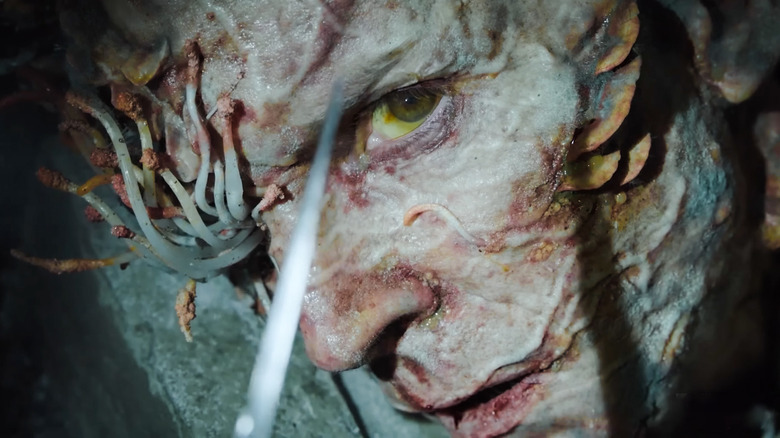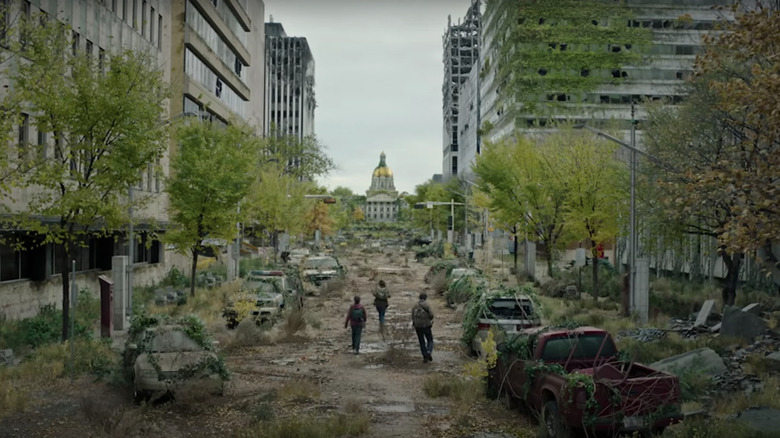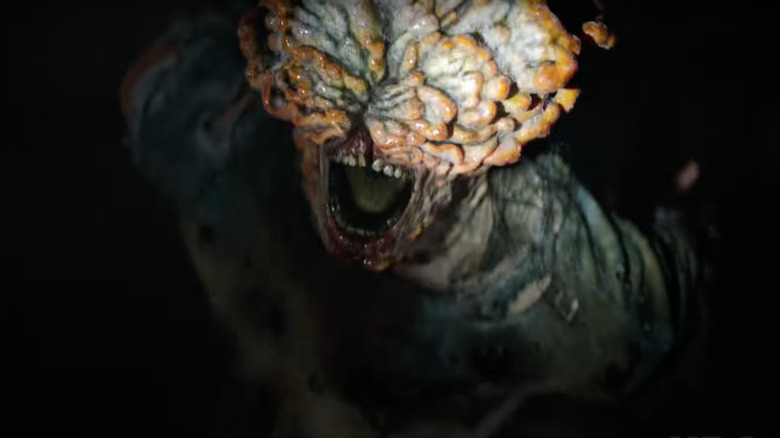HBO's The Last Of Us Just Added A Fascinating New Detail About The Infected That Wasn't In The Games
This post contains spoilers for the latest episode of "The Last of Us."
"The Last of Us" is a triumph. What it's not is breaking the "video game adaptation curse" because that is a dumb concept that has already been broken several times in recent years and you just weren't paying attention. Still, HBO's adaptation puts the final nail in the coffin of the idea that you can't make good shows or movies based on games.
The show is incredibly faithful to the game, to the point where it often feels like you're watching the cutscenes from the game stitched together. Even the tiniest detail is replicated, down to camera movements. And yet, it is in the changes to the source material where "The Last of Us" truly shines.
One of the joys of being an anime fan is seeing when an adaptation brings along the original manga creator to suggest or approve changes to the source material because they thought it would work better — like "Attack on Titan" rearranging and condensing events because the manga author regretted the pacing of the original. For "The Last of Us," Craig Mazin collaborates with game creator Neil Druckmann to make some fascinating additions to the story that enhance the viewing experience. Sure, we all lament the lack of the terrifying spores, but the show has added some great things, like an opening scene set in the '60s that adds context to the infection. In episode two, however, the show gives us a fascinating detail about the infected that makes the world of the show even scarier.
The hive mind
Episode two starts with another flashback, this time to right before the outbreak, in Indonesia. We see a scientist who recognizes that the Cordyceps fungus has evolved to infect humans, and suggests the military just bombard Jakarta and burn it to the ground because there is no containing the infection once it's begun. It's a cool little scene that helps set this show apart from other zombie apocalypse stories by showing the efforts to prevent the infection from spreading, and the immediate effects before the apocalypse begins.
The rest of the episode follows Joel and Tess escorting Ellie through a ravaged Boston, looking for the Fireflies. Along the way, they see hordes of infected just grouped together, mostly not moving, almost like they're hibernating, since there are no humans to feed on.
What's new is that Tess explains to Ellie that the infected share some sort of connection, a hive mind. There are vine-like tendrils running across the entire city that connect the infected with the fungi that created them. What's more, the hivemind transmits information through said tendrils, so if you step on one, infected on the other side of town can "hear" you and chase after you.
Like the cordyceps infection itself, this is based in real biology; the roots of fungi are called mycelium, and they link up beneath the ground to form a vast network, known as a mycorrhizal network, that's also connected to plants and trees. In fact, mycorrhizal networks have more connections than there are pathways in the human brain, and can stretch for thousands of miles. German forest ranger Peter Wohlleben uses the phrase "Wood Wide Web" to describe mycorrhizal networks, which trees can use to send distress calls via electrical signals (when they're being harmed by invasive species or disease). Trees can even nurse their sick neighbors by passing nutrients through the network, thereby maintaining the health of the entire forest.
We didn't really need this to be scarier
"The Last of Us" is a terrifying game. If the story wasn't already dark and grim enough, the stealth-based gameplay turns it into a horrific experience. There are infected behind every corner just waiting to jump at you, and every tiny mistake you make can lead to a shootout you are underprepared for.
This is the perfect replacement for the game's spores. Sure, having spores that both signal the presence of clickers, and imply a more dangerous yet less visible threat, is scary and very effective, but there's nothing worse than the thought of zombies communicating with each other. Zombies that can track you.
"The Last of Us" is a fantastic drama, one that explores survival and making relationships in the face of great adversity. This is often a tear-jerking story. And yet, every time you forget that this is also a show about zombies, along comes a reveal like that of the interconnected tendrils to remind you that this is also a horror show created by the guy who gave us "Chernobyl," and it is terrifyingly effective. Fighting one group of zombies is scary enough, fighting entire hordes that talk to each other is the stuff of nightmares.
"The Last of Us" airs Sundays on HBO.


